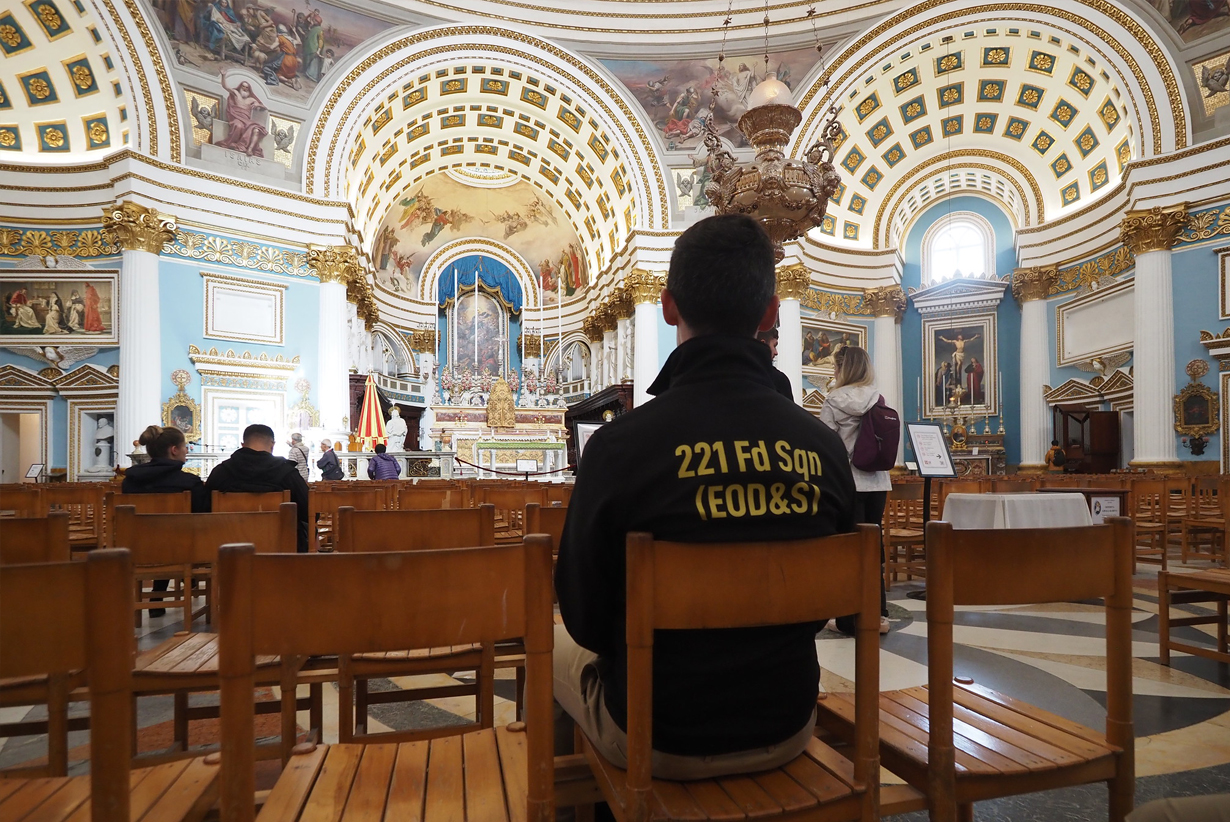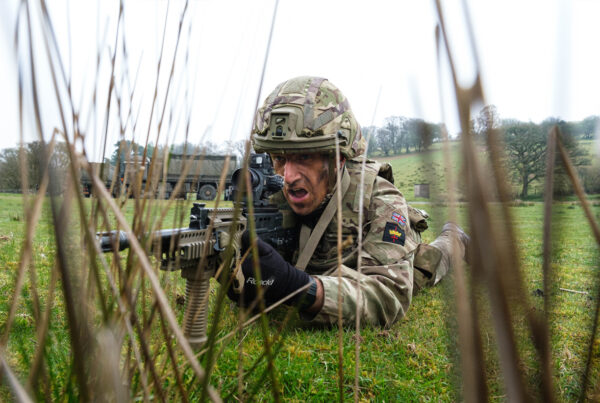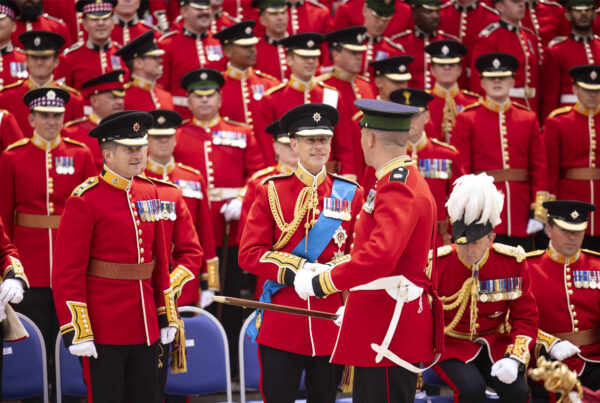Major Still, Officer Commanding 221 Fd Sqn (EOD&S)
221 Fd Sqn (EOD&S) is the London Sqn for 101 Engineer Regiment (EOD&S) and has a fascinating history of bomb disposal in the capital as well as overseas. Thanks to research by a previous SSM within the Sqn, we were able to trace back the work of Lt George Carroll who was known as “Tal-bomba” (the bomb man) during his time on the island of Malta. He has gone down in EOD history as the person who oversaw the disposal of more unexploded bombs than any other BDO officer in WWII across all theatres of war, having dealt with a staggering 533 in one month alone, and 1,500 between 1941 and 1942. He worked in London and eventually retired to Kent, becoming part of the local BDO community of our unit. Using this as our basis, we decided to make our own pilgrimage to Malta to see the work of Lt Carroll and his team and pay our respects to those who gave their lives during the conflict. The contribution by GL RFCA was vital towards our study as it allowed entry to many more museums and sites of interest than our own funds could afford. The article below is written by three of our Sappers and highlights how fantastic the study was for all involved.
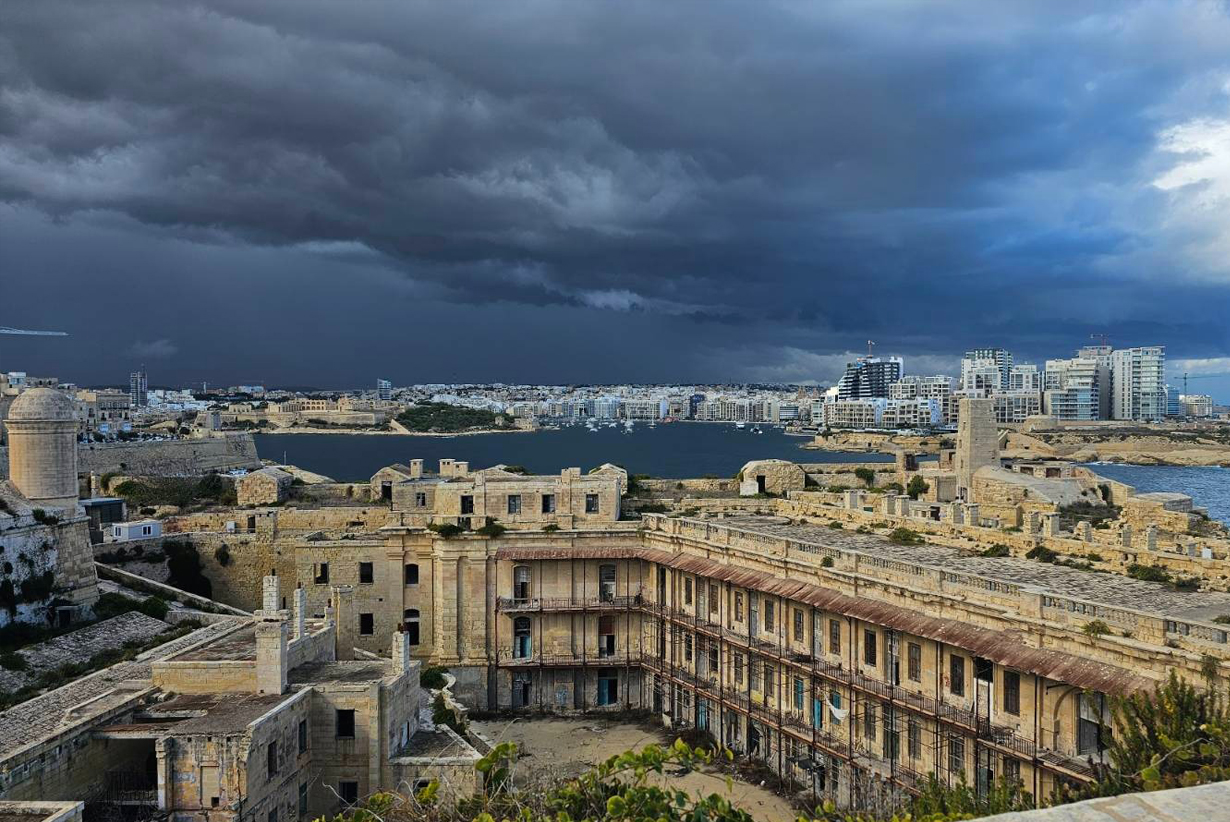
Exercise Hudson, Malta
On November 23rd 2023, after several months of intricate planning, alongside a painstaking ‘Test and Adjust’ approach to the logistical issues encountered along the way, 221 Fd Sqn EOD&S was able to embark on a truly enriching three day Battlefield Study of Malta.
The goal was to get an insight into the most bombed island on the planet. We wanted to learn how the history of Malta during the Second World War links with our understanding of Explosive Ordnance Disposal (EOD) and Search today. 221 also aimed to show our appreciation to the local communities of Malta which have diligently preserved important contributions from our Armed Forces, some dating back to the early 1800s.
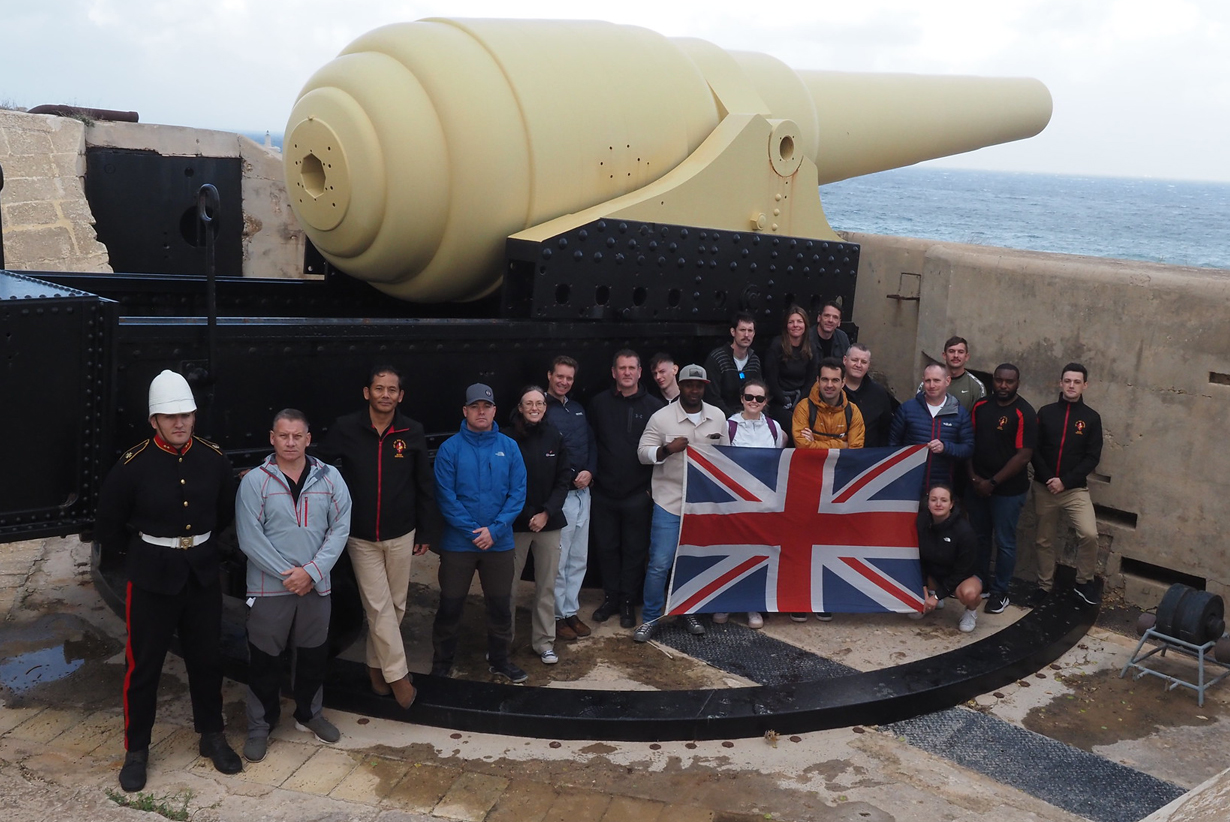
Day 1 – Sapper Charlie Webster
We arrived in Malta on a Thursday and after getting a rare early night, I woke up on Friday morning with a spring in my step knowing that I would soon be stood on St George’s Square, Valleta, delivering a presentation to the squadron on the history of the square. Nerves aside, history is a subject I am passionate about and I was more than happy to describe how Malta was recognised in the Spring of 1942 with the George Cross, a brand new award that is the civilian counterpart for the Victoria Cross. It was earned by Malta for heroism and devotion in the face of an unrelenting bombing campaign by the Axis powers. The square hosted the award ceremony in August 1942 and thus became known as St George’s Square. The award served to raise morale and renew the tenacity of the Maltese, assuring them that their sacrifices were not in vain.
After taking some time to look around the beautiful Limestone architecture in the vicinity of the square, we visited St Pauls Church that still displays items of affiliation to the British and Commonwealth forces once posted in Malta. The various cap badges of the Corps of Royal Engineers through history could be seen frequently when walking around the church and there were a number of crocheted cushions featuring George VI Royal Engineer Cap Badges amongst the pews. After laying a wreath and joining the vicar in a prayer, 221 presented him with a squadron plaque in appreciation of the church’s ongoing consideration and respect for British and Commonwealth service personnel.
Our next stop was Fort St Elmo, a coastal fortification that was built by the knights of St John. It was significant to the battlefield study as Sappers had worked on the fort to assist with the Anti-Air efforts of Malta during WWII. One picture displayed in the fort that stood out for me showed the reconstruction of a footbridge that leads to a star-shaped ‘final stand’ portion of the fort known as The Cavalier. The inscription on the picture describes the ‘ingenious solution’ of using lashings and wooden beams to build a platform that enabled the Sappers to work on the bridge in the absence of purpose built scaffolding. It really hit home for me how fundamental it is to us as Sappers to not only master the basics but to also think outside of the box when it comes to applying our Combat Engineering skillset.
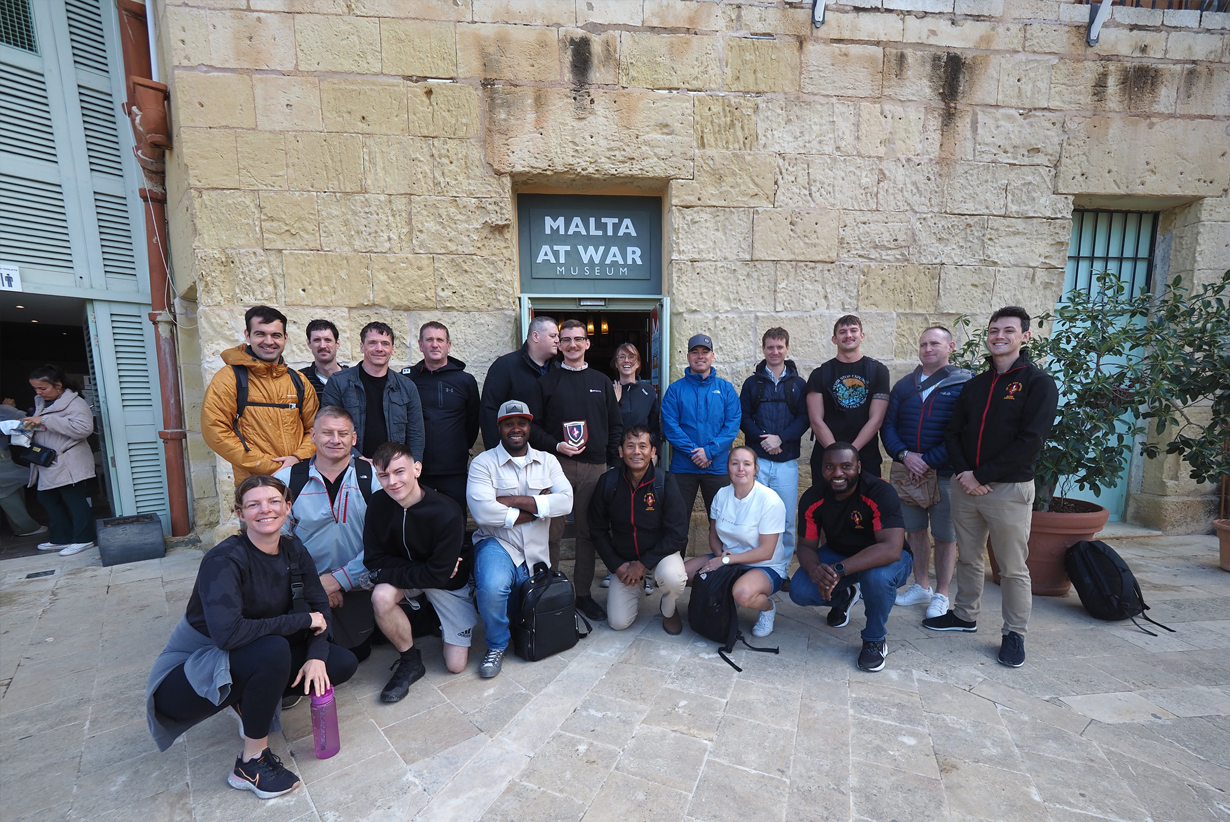
Day 2 – Sapper Alex Appleby
After a quick bit of breakfast and a coffee, we began the second day of the study at the Mosta Rotunda.
The Mosta Rotunda is a beautiful neoclassical church with a prominent and visually striking dome ceiling. If you look close enough you can still see a small section of the dome that is missing tiles from where a 500kg bomb pierced the dome but miraculously did not detonate. The bomb was made safe by one of the two Royal Engineer bomb disposal sections serving in Malta during WWII, though it’s uncertain exactly who worked on this particular bomb. Notably, we had a rare chance to walk through the tunnel system below the Mosta Rotunda that had been hand excavated by Royal Engineers and Maltese locals to provide local residents with protection from Axis bombing raids.
Our second stop was the Malta at War Museum located at the entrance of Vittoriosa, one of the oldest cities in Malta. What is quite unique about this museum is the air raid shelter located below it. In just a couple months, Royal Engineers and Maltese locals built a vast public air raid shelter underground by hand. There were designated rooms for first aid and surgery; there was even a room for mothers to give birth.
Our day came to an end by taking time to pay our respects and remember those who gave their lives in service by laying a wreath at Pembroke Military Cemetery. Significantly, the first soldier buried at the cemetery was Sapper F Jarvis of 28 Company, Royal Engineers, who died on the 5th May 1908. He rests amongst 324 war graves associated with both World Wars.
Upon reflection, the trip has reinforced my sense of pride to be a Royal Engineer. Sappers overcame massive odds in order to fight for the liberty of those overseas. The bravery of the commonwealth forces and the local Maltese population emanates from every inch of rock on which this beautiful fortress island stands – to be given this opportunity was incredible.
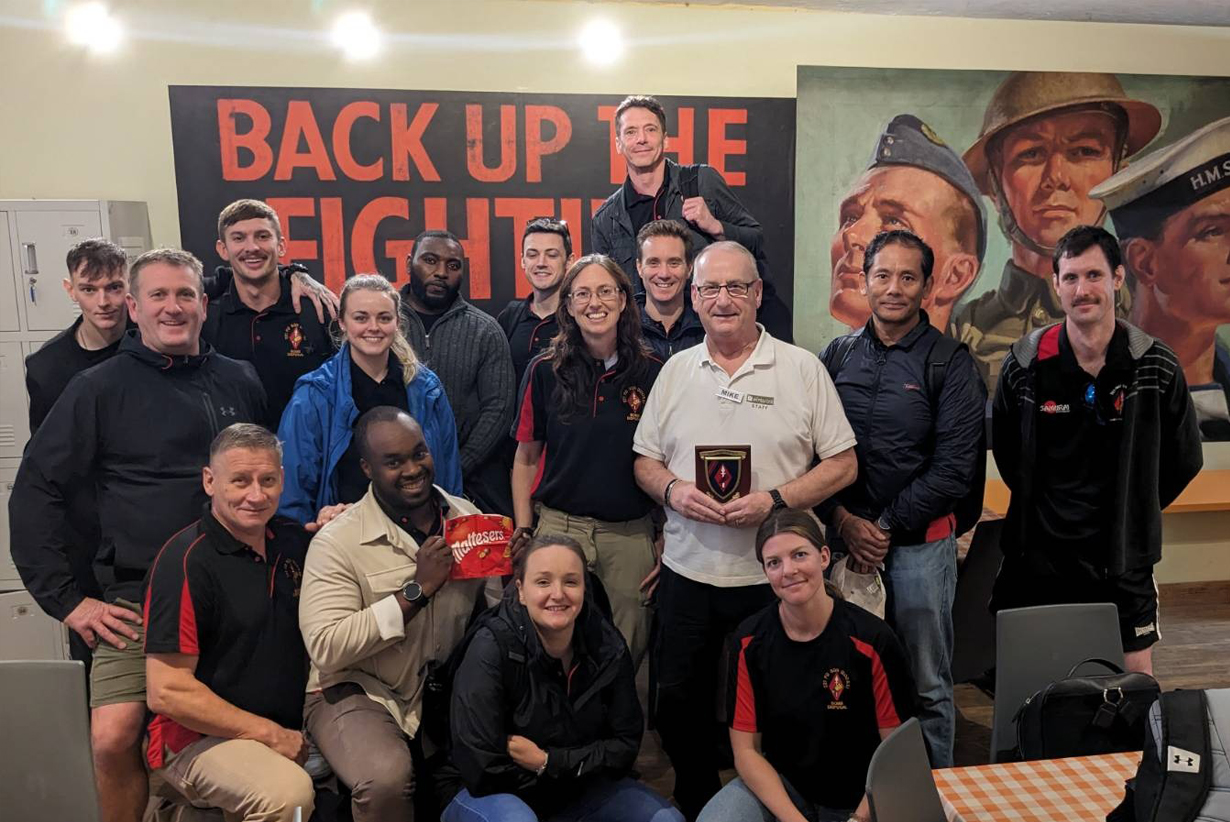
Day 3 – Recruit Scarlett Kudrik
Due to inclement weather on the island in the days prior, the seas were too chaotic for a catamaran tour to the blue lagoon. However, with a new plan in motion 221 Field squadron embarked on a journey to Gozo, which is a small island situated north east of Malta. On arrival, we were greeted by three friendly tour guides, ready to show us the sights from the back of three open-backed Jeeps. The tour started in Mgarr Harbour, from where we crossed the island to our first stop, Xaghra. Here we found a beach at Ramla Bay, boasting light blue seas and sun baked sand. Not only did the beach proclaim its beauty to the world, but it spoke of myth and legend, being home to Calypso’s cave mentioned in ‘The Odyssey’ by Homer. Legend has it that it is the cave where Calypso kept Odysseus as a prisoner of love for seven years. The story may be a myth, and the cave no longer open to visitors, but the legend lives on and many tourists visit due to its association with the story of Calypso.
Our next stop was to the Salt Pans at Leli Tal-Melh. Pans situated at the edge of the cliffs were filled with glistening sea water and mirrored the skies above. The pans appeared to be hand excavated to hold sea water, which could either be pumped into the pools or, filled when the waves crash into the pools during bad weather. In summer the sea water would dry out in the heat, thereby producing salt. Historically it would be used not just for seasoning food and curing meats, but as currency. This was revived during the British occupation, when the government offered local concessions for local people to work the salt pans and own shares in them.
The next, truly mesmerising sight was a church situated on a hillside in Gharb, which featured four external mosaic walls, depicting scenes from the bible, mainly of Jesus’s life and crucifixion. The colourful mosaics seemed to hold the sun in their tiles, telling the bible story through glorious colour; it was a truly magnificent addition to an already stunning church.
One of the last stops on the tour was Xewkija Rotunda Church. We then sampled the local Maltese cuisine, before a leisurely drive through Victoria back to the harbour to return to mainland Malta.
The tour around Gozo was about their culture and traditions rather than their troubles during the war. It was refreshing, and quite extraordinary to see how peaceful Gozo is, and how those living there used the natural habitat and landscapes to enhance their lives.
Once we returned to the mainland, in the evening we had our last supper, bringing military mess traditions to a Maltese restaurant in full force. Whilst leadership, wearing their glorious red attire, looked magnificent, us mere Sappers bathed in their glory to celebrate the work of the QMSI, who was leaving the squadron.
Overall, I thought the third day was one of the best of the entire excursion as it really proved how beautiful Malta was as a country, both through scenery and traditions – a fitting end to our battlefield study tour of Malta.
